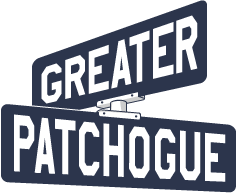It’s no secret that the once-downtrodden Patchogue Village has become a boom town here on Long Island.
To find the formula for the village’s success, the Long Island Regional Planning Council conducted an elaborate study that examined data spanning nearly two decades.
During that time, some $37 million in government grants flowed into the village.
[Editor’s note: An earlier version of this article incorrectly reported the above grant money amount by a large number.]
The council released its results on Thursday, Dec. 6, at Patchogue Theatre for the Performing Arts.
“Today, it is about an administration, a Chamber of Commerce, a Business Improvement District, downtown businesses, a school district, a library, and most of all, a community effort … that worked together to make the village what it is today,” said Patchogue Mayor Paul Pontieri.
Before Thursday’s presentation, Rich Guardino, the council’s executive director, told Newsday that Patchogue has become “the model for transit-orientated development. It’s one of the most successful revitalization efforts that has ever taken place on Long Island.”
The revenue generated from within the village came mainly from development projects and thriving downtown businesses, said economist Todd Poole of 4ward Planning Inc., who headed the research.
Since 2000, $246 million was invested into the area to create residential housing at complexes such as the apartments (and retail shops) at New Village, townhouses and condos such as those at Bay Village and The Riverwalk, and affordable housing projects — namely ArtSpace Lofts and Copper Beech.
Those not only created construction jobs, but brought more people living and spending money in the area, according to the report.
But there’s more to the story.
“We not only analyzed private construction … we also looked at the economics from new, non-local spending,” said Poole, who analyzed the impact of people coming into Patchogue for entertainment, dining, and community events such as the Alive After Five summer festival series.
Going forward, Poole’s studies show the village is on track to continue with economic growth over the next decade.
According to the report, from 2019 to 2029 [year corrected from initial report], an additional 2,527 jobs will be added to the area with nearly $240 million being generated.
The overall thrust of the report shows the recipe for economic success involves solid community leadership, infrastructural investment by the state and local governments — think sewer upgrades — and private dollars flowing into residential development.
“When you insert new dollars into a particular economy that’s how economies grow,” said Poole.
And, “putting aside politics to push the ship forward,” he added.
In 2000, Patchogue’s downtown had dozens of vacant stores. Empty stores are minimal today. Not only that, even the brick-and-mortar retail sector — ailing across the U.S. — is healthy and doing better than in most older downtowns in the state, the report found.
Patchogue has become a model for other downtowns seeking turnarounds, said Pontieri.
He and his colleagues in village government were given much credit for spearheading the comeback.
























